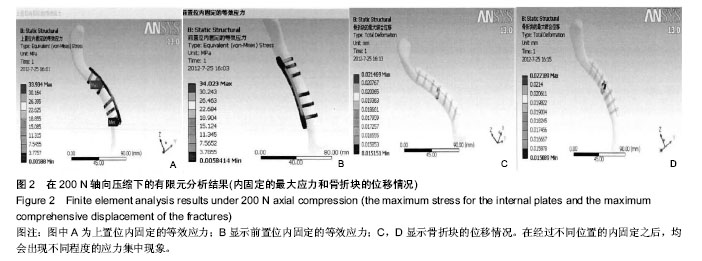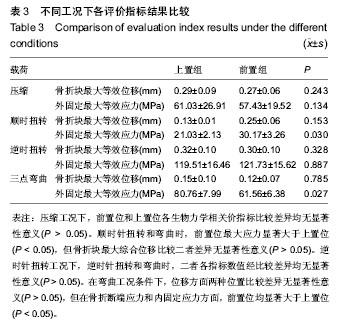| [1] 高文.锁骨远端加压钢板内固定术治疗锁骨远端NeerⅡB型骨折12例疗效观察[J].山东医药,2013,53(31):42-43.
[2] 蔡晓冰,张立国,竺伟,等.锁定加压钢板治疗锁骨远端NeerⅡB型骨折[J].中华骨科杂志,2012,32(7):659-663.
[3] 刘洋,沈洪涛.重建固定带与记忆合金环抱器治疗老年锁骨中段骨折的效果[J].中国老年学杂志,2013,33(3):680-681.
[4] 利云峰,霍力为,贺华勇,等.外展架配合“8”字绷带及小夹板外固定治疗锁骨骨折的临床观察[J].湖南中医药大学学报,2013, 33(2):54-55,67.
[5] 刘洪江,欧建峰,刘海全,等."8"字绷带外展位固定治疗锁骨外端骨折临床研究[J].内蒙古中医药,2011,30(4):96-97.
[6] 陈浩,张锦洪,贺增良,等.弹性髓内钉固定与钢板固定治疗锁骨中段骨折的Meta分析[J].中国组织工程研究, 2013,17(13): 2407-2414.
[7] 赵燕鹏,张立海,唐佩福,等.锁骨中段复杂骨折重建钢板锁定与非锁定的选择[J].实用骨科杂志,2013,19(8):698-701.
[8] Umile L, Sughran B, Julie B,et al.Conservative management versus open reduction and internal fixation for mid-shaft clavicle fractures in adults - The Clavicle Trial: study protocol for a multicentre randomized controlled trial.Trials.2011;12 (1):57.
[9] Wall LB, Mills JK, Leveno K, et al. Incidence and Prognosis of Neonatal Brachial Plexus Palsy With and Without Clavicle Fractures. Obstet Gynecol. 2014;123(6):1288-1293.
[10] 朱昌荣,章莹,郭晓泽,等.重建钢板前置和上置固定锁骨中段斜形骨折的有限元分析[J].中国临床解剖学杂志, 2013,31(1): 104-107.
[11] Bhatia D, Page R. Surgical treatment of lateral clavicle fractures associated with complete coracoclavicular ligament disruption:Clinico-radiological outcomes of acromioclavicular joint sparing and spanning implants.Int J Shoulder Surg. 2012; 6(4):116-120.
[12] 王永红,谭宇,李家洁,等.外展架配合8字绷带及小夹板外固定治疗锁骨骨折的护理配合[J].中国医药指南,2013,(21):734-735.
[13] 王锋,樊友亮,丁亮华,等.Herbert螺钉与锁骨重建钢板治疗锁骨中段骨折的临床比较研究[J].中国骨与关节损伤杂志, 2013, 28(7):659-660.
[14] 曾浪清,陈云丰,张长青,等.重建钢板与钛制弹性钉两种内固定方式治疗锁骨中段骨折的有限元分析[J].医用生物力学,2013, 28(4):441-447.
[15] 曾浪清,陈云丰,刘燕洁,等.锁骨中段骨折治疗现状[J].国际骨科学杂志, 2012,33(6):374-375.
[16] 李海.成人锁骨中段有移位骨折手术与保守治疗的病例对照研究[J].中国骨伤,2012,25(4):278-281.
[17] 付备刚,王秀会,陆耀刚,等.锁定与普通重建钢板治疗移位锁骨中段骨折的疗效比较[J].中国骨与关节损伤杂志, 2013, 28(3): 228-230.
[18] Frye BM, Rye S, McDonough EB, et al. Operative Treatment of Adolescent Clavicle Fractures With an Intramedullary Clavicle Pin. J Pediatr Orthop. 2012;32(4):334-339.
[19] 张义君,王建国,王仙斌,等.前下侧重建钢板治疗锁骨中段骨折[J].实用骨科杂志,2012,18(10):919-920.
[20] 纪斌,庞金辉,曹成福,等.钢板前置内固定治疗锁骨骨折的疗效[J].上海医学, 2012,35(11):957-959.
[21] 曹军社,王星.前置重建钢板内固定治疗成人锁骨中段骨折[J].临床骨科杂志, 2013,16(4):469-470.
[22] 赵燕鹏,唐佩福,郭晓东,等.前置与上置重建钢板治疗锁骨中段复杂骨折的临床分析[J].现代生物医学进展, 2013,13(21): 4053-4055,4072.
[23] 陈永志,陈瑜,朱让腾,等.锁骨中段移位骨折的锁定与非锁定重建钢板疗效比较[J].中医正骨,2012,24(2):57-59.
[24] 刘凤祥,龚伟华,唐坚,等.多轴锁定接骨板、重建接骨板、重建带治疗锁骨中段骨折[J].中国骨与关节外科, 2013,6(6): 505-509, 514.
[25] 王秀会,王喆,夏胜利,等.锁定钢板经皮治疗锁骨中段骨折的疗效评价[J].中华手外科杂志,2012,28(6):380-381.
[26] 林杨景,林炎水,李连宏,等.锁定与普通解剖型锁骨钢板在锁骨中段骨折中的疗效比较[J].大连医科大学学报, 2014,36(1):54-56,64.
[27] 张文文,杨建文,胡小永,等.手术治疗不稳定型锁骨中段骨折[J].临床骨科杂志, 2012,15(3):345-346.
[28] Madsen W, Yaseen Z, LaFrance R, et al. Addition of a Suture Anchor for Coracoclavicular Fixation to a Superior Locking Plate Improves Stability of Type IIB Distal Clavicle Fractures. Arthroscopy. 2013;29(6):998-1004.
[29] 邹俊,袁晨曦,梅昕,等.S型锁定与锁骨钩钢板内固定治疗锁骨近远端骨折的疗效分析[J].重庆医学,2014,43(18):2351-2353.
[30] 曾菁,李孝林.前置与上置重建钢板治疗锁骨骨折的应用解剖学[J].解剖学杂志, 2013,36(3):374-376.
[31] 阮国模,苏佳灿,苏忠良,等.重建钢板固定锁骨干中段骨折的三维有限元生物力学分析[J].浙江医学, 2012,34(5):323-325. |


.jpg)